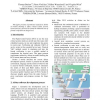105
click to vote
ICSE
2009
IEEE-ACM
14 years 10 months ago
2009
IEEE-ACM
This paper presents experiments realized by Airbus on model checking a safety critical system, lessons learnt and ways forward to extend the industrial use of formal verification ...
102
Voted
SAFECOMP
2010
Springer
14 years 10 months ago
2010
Springer
Formal verification efforts in the area of robotics are still comparatively scarce. In this paper we report on our experiences with one such effort, which was concerned with design...
117
Voted
JSA
2008
14 years 12 months ago
2008
We present a framework for the formal verification of abstract state machine (ASM) designs using the multiway decision graphs (MDG) tool. ASM is a state based language for describ...
103
Voted
JISE
1998
15 years 3 days ago
1998
straction reduces the number of states necessary to perform formal verification while maintaining the functionality of the original model with respect to ifications to be verified....
106
click to vote
FMSD
2002
15 years 6 days ago
2002
Combining verification methods developed separately for software and hardware is motivated by the industry's need for a technology that would make formal verification of reali...
96
Voted
JAR
2008
15 years 13 days ago
2008
This article describes the formal verification of a compilation algorithm that transforms parallel moves (parallel assignments between variables) into a semanticallyequivalent sequ...
104
Voted
ENTCS
2006
15 years 14 days ago
2006
The approaches to automatic formal verification of UML models known up to now require a finite bound on the number of objects existing at each point in time. In [4] we have observ...
119
Voted
ENTCS
2006
15 years 14 days ago
2006
The traditional approach to validate analog circuits is to utilize extensive SPICElevel simulations. The main challenge of this approach is knowing when all important corner cases...
106
click to vote
CORR
2010
Springer
15 years 16 days ago
2010
Springer
Reusable software components need well-defined interfaces, rigorously and completely documented features, and a design amenable both to reuse and to formal verification; all these...
136
click to vote
CL
2008
Springer
15 years 16 days ago
2008
Springer
Currently available application frameworks that target the automatic design of real-time embedded software are poor in integrating functional and non-functional requirements for m...

